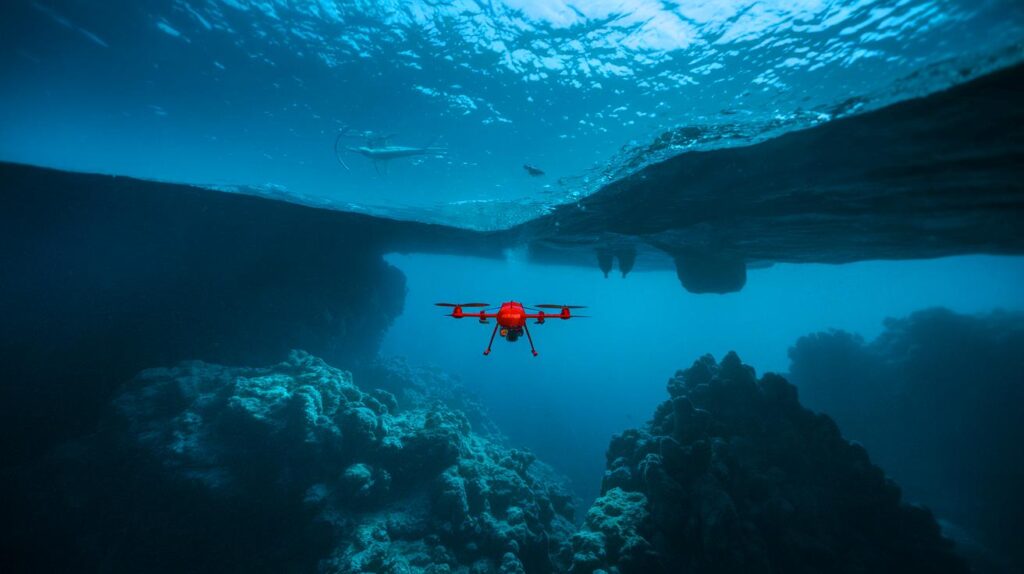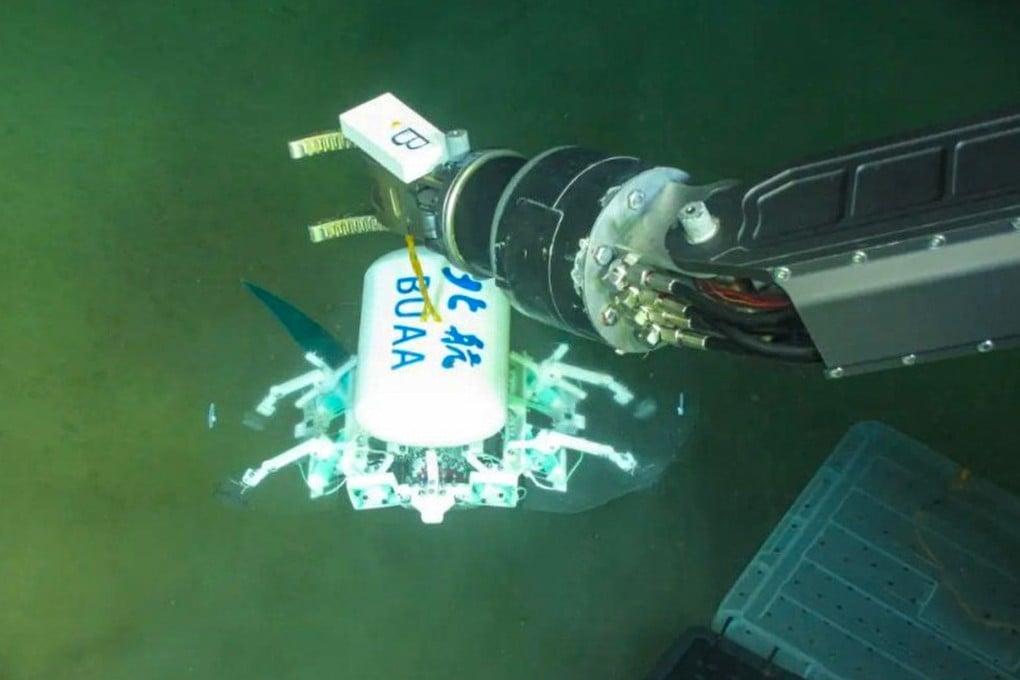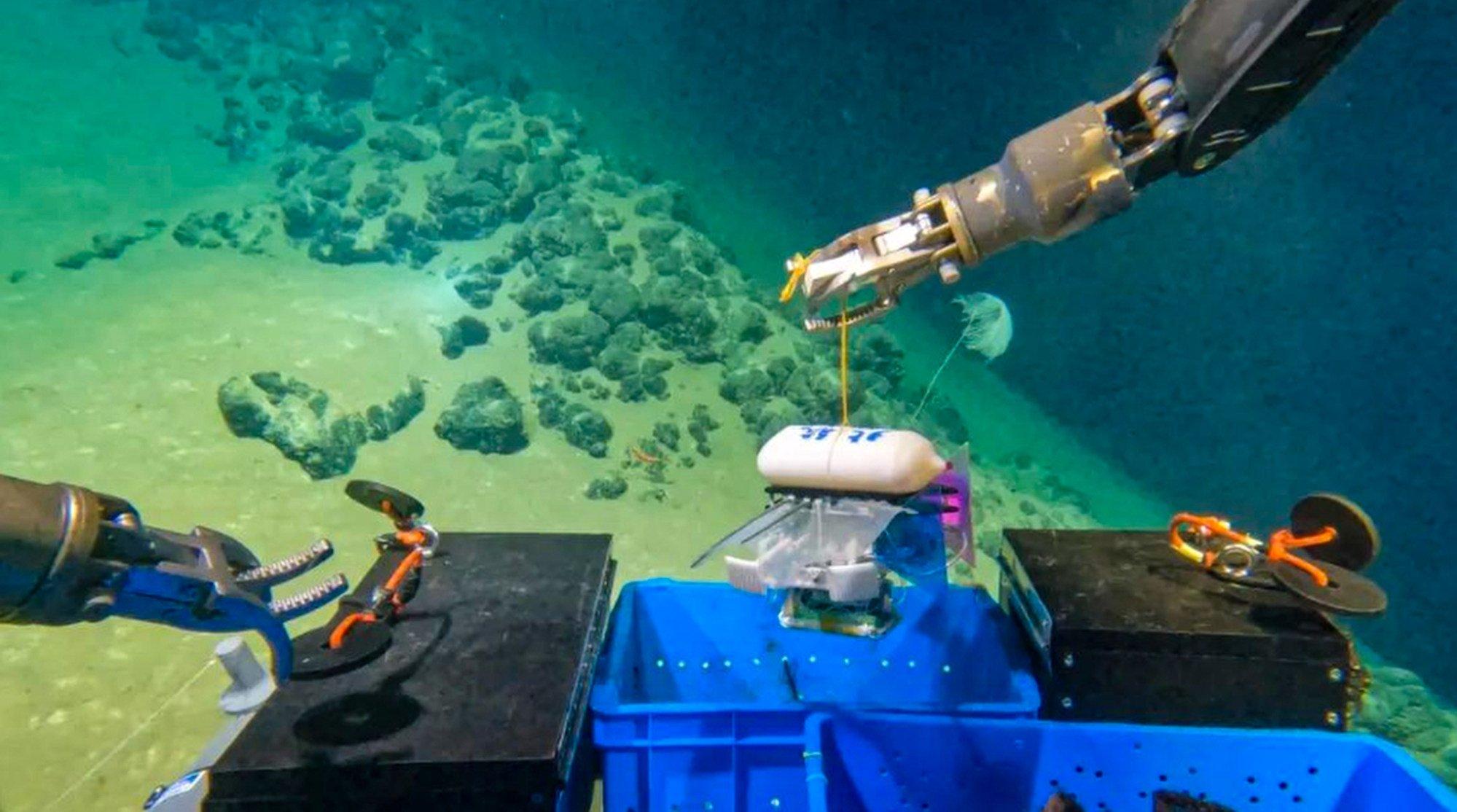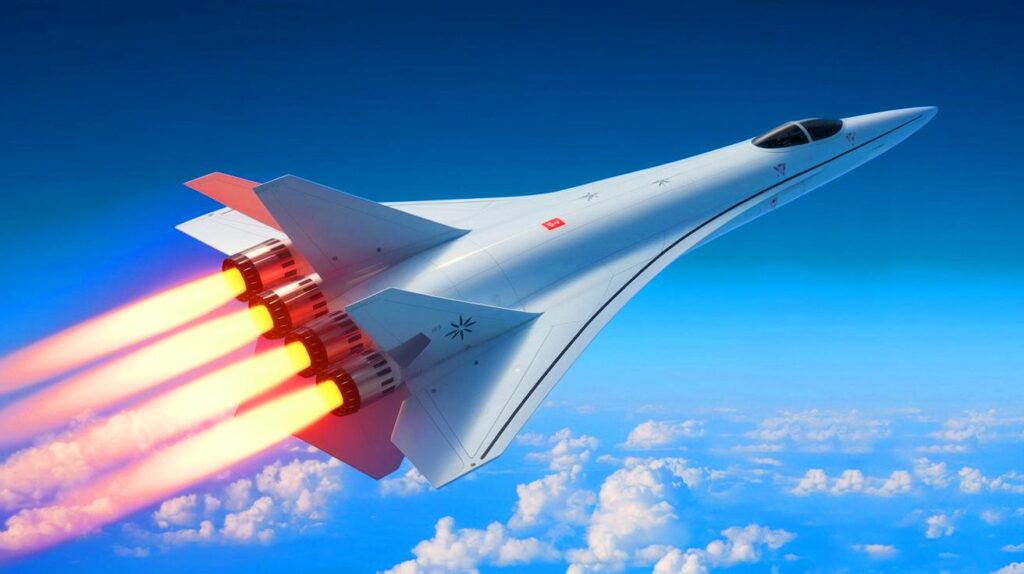| In Brief |
|
In the uncharted depths of the western Pacific Ocean lies an impressive technological achievement. The Mariana Trench, located east of Guam, is the deepest point on Earth. Recently, China unveiled a revolutionary miniature drone, the size of a suitcase, capable of withstanding the extreme pressures of this hostile environment. This advancement could transform future underwater exploration and marks a significant milestone in the global technological race.
The technology behind the miniature drone
The drone, developed by researchers at Beihang University in Beijing, utilizes smart metallic actuators that convert water pressure into propulsion. This enables it to swim, slide, and crawl along the abyssal floor of the Mariana Trench, reaching depths of 10.7 kilometers. At this depth, the pressure equates to 1,000 atmospheres, which is like the weight of an iceberg on the robot. This technology, detailed in a groundbreaking study in Science Robotics, highlights the growing technological gap between Beijing and Washington.
The robot employs shape-memory alloys for gentle activation underwater. Not only do these technologies allow the drone to move under pressure, but they also enhance the capabilities of its robotic arm to perform various underwater tasks. The development of this transformable robot with a soft actuator at the centimeter scale is a remarkable achievement.
The race to the depths: China versus the United States
In 2024, China achieved 246 deep dives, outpacing all other nations combined. Meanwhile, the United States relies on aging submersibles like Alvin, which is 61 years old and can only reach 6,500 meters. This Chinese advancement highlights the urgent need for the United States to invest in modernizing its underwater technologies. The Chinese drone represents a significant technological leap, proving that innovation can conquer the limits of ocean depth.
The economic and strategic implications of these explorations are enormous. China’s ability to conduct deep-sea expeditions could give it an advantage in the exploration of ocean resources, posing a direct challenge to American capabilities.
The role of shape-memory alloys
Shape-memory alloys (SMAs) lie at the heart of this innovation. These materials allow the robot to adapt to extreme pressures by changing shape. They offer a sustainable and effective solution for underwater propulsion and control. SMAs can revert to a predefined shape when heated, a major asset in designing robots for extreme environments.
By utilizing SMAs, the robot can perform complex and precise movements, which are essential for navigating the depths of the Mariana Trench. Researchers hope that this technology can be applied to other fields, such as medicine and aerospace, paving the way for new innovations.
Implications for future ocean exploration
This miniature robot marks a turning point in underwater exploration. It could enable deeper and more frequent exploration of the ocean floor, facilitating the discovery of new species and untapped natural resources. The drone’s ability to operate under extreme pressure could also revolutionize scientific research by providing valuable data on ocean ecosystems.
With this advancement, China positions itself as a leader in deep-sea exploration. This raises questions about how other nations will respond to this technological challenge. What will be the next steps for global underwater exploration, and how will this technology influence our understanding of the oceans?










